Sculptures, turtles, documentaries and more: 2021 Maple and Hickory Scholars
By Patrick Webb ’21
This summer, 15 students participated in the 2021 Maple Scholars and Hickory Scholars programs.
Goshen College’s Maple Scholars program is an eight-week, hands-on interdisciplinary summer research opportunity that encourages applicants from every discipline to participate. Projects are proposed by any department. Hickory Scholars is Merry Lea’s equivalent to the Maple Scholars program.
Maple Scholars
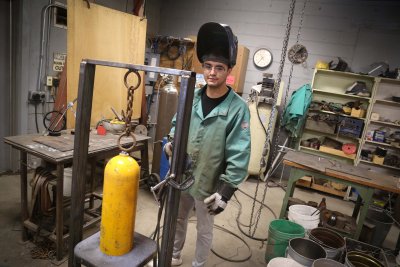
Musical Playground Sculpture
Joel Lara, a senior art major with a concentration in pre-architecture and a Spanish minor from Aguascalientes, Mexico and Goshen, Indiana, is working with John Mishler, associate professor of art, designing and building a musical sculpture for Assembly Mennonite Church in Goshen, Indiana. They’re researching other musical sculptures, then will design and build the sculpture.
The Maple Scholars project is Lara’s first big commission and professional sculpture.
“This project will push me out of my comfort zone and challenge me in a good way.” said Lara.“I am excited to see the kids get excited about getting a musical playground that will allow them to create music and all sorts of sounds.”
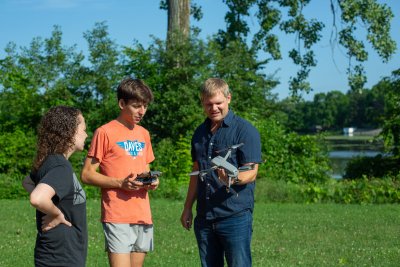
Goshen Spotlight
Courtney Templeton, a junior film production major from St. Louis, Missouri, and Jackson Steinmetz, junior film production and communication major minoring in spanish and graphic design from Bluffton, Ohio, are working with Kyle Hufford, associate professor of communication. They are collaborating on a Goshen Spotlight documentary.
Goshen Spotlight documentaries explore untold stories in the Goshen community.
This year’s Goshen Spotlight is about Blosser’s Island, located in the middle of the Goshen Dam Pond. Blosser’s Island was used as a youth leisure activities park in the early 1900’s. The trio will produce a short 10-minute documentary, titled “Blosser’s Park: The Social Gathering Place of Goshen.”
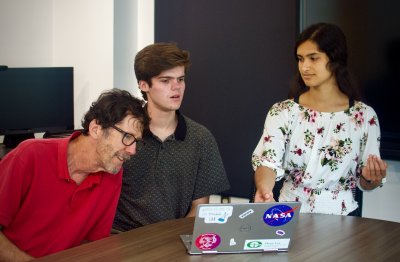
Rainfall Variation in Tanzania
Samuel Stoner Eby, a junior physics major from Goshen, and Lisa Nalliah, a junior environmental science major, chemistry minor from Huntington, Indiana, are working with Paul Meyer Reimer, professor of physics. The team is studying environmental risk factors that contribute to mycotoxin presence in crops, including precipitation and soil, in collaboration with a research group led by President Stoltzfus, using satellite data.
“Mycotoxins are toxins produced by fungi,” said Meyer Reimer. “The fungi are widely present in soil. Drought stress, for example, can make plants more easily colonized by fungus.”
“In large enough quantities they can cause various cancers,” Meyer Reimer explained. “President Stoltzfus is working on a study to connect lower levels of mycotoxins with ‘stunting’: That is, children who ingest enough mycotoxins might not grow as fast as other children.”
“I am most excited to acquire more programming skills and “become familiar with the R programming language and QGIS program [a map program],” said Nalliah. “These are very useful tools for data analysis.”
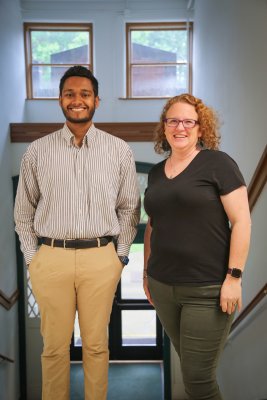
Mental Health Needs of Law Enforcement
Ronit Goswami, a senior exercise science major minoring in sport management, is working with Jessica Lala, associate professor of social work. They are working to determine what research has been done regarding the mental health of current and retired law enforcement officers, along with suicide rates.
They are also exploring ways to evaluate the mental health needs and views of local law enforcement officers.
“What I am most excited about my project is connecting with officers and sheriffs to see how they truly feel about law enforcement,” said Goswami. “My project focuses primarily on the mental health effects and I’m excited to be outside of my comfort zone and explore the day-to-day life of our county officers.”
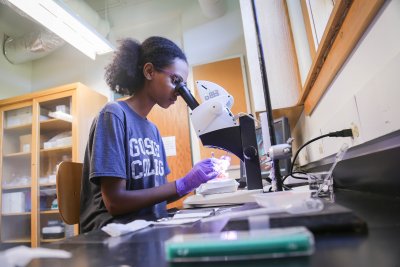
Bovine Lung Physiology
Rediet Delelegne, a senior molecular biology major from Addis Ababa, Ethiopia, is working with Neil Detweiler, assistant professor of biology and director of pre-health programs. They are working on an ongoing study of the physiology of cow pulmonary arteries.
“We have a lot to learn about how arteries in our lungs respond to low oxygen, but we know even less how they respond to changes in pH,” Detweiler said.
Tactile Programming Environment For the Blind
Asa Schiller, a sophomore math and computer science double major from Pasadena, California, is working with Jeanette Shown, associate professor of computing science. The duo are working on making a tactile programming environment to help students in high school and college who are visually impaired to learn to code.
They are designing 3D printed cases for the small computers known as Raspberry Pi, with braille to teach students how to solve problems that need computational thinking and computer programming. The blocks will simultaneously teach students coding syntax and program formats.
They hope to collaborate with creators of integrated development environments (IDEs), which programmers use in their daily work. This is important, because current IDEs are not accessible to blind students.
Hickory Scholars
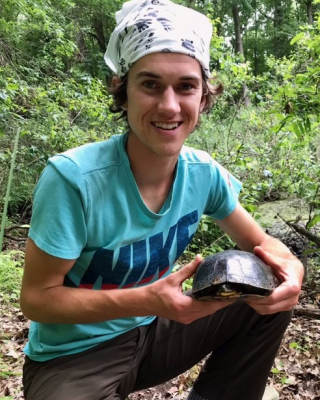
Turtle and Salamander Projects
Liam Elias, a senior environmental science major from Bothell, Washington, is collaborating with Jason Martin, executive director at Merry Lea Environmental Learning Center. They are working on assessing salamander and turtle populations at Merry Lea.
The turtles include the endangered Blanding’s turtle species. Elias and Martin are putting radio tags on the Blanding’s turtles, to see what habitats on Merry Lea they inhabit.
The project is a collaboration between Merry Lea and Dr. Suzanne Beyeler (the head researcher) and Dr. Kristin Short of Manchester University; they are studying how turtles move from Manchester, Indiana to Goshen, Indiana. Habitats are fragmented due to dehabitization from farmland development. The project hopes to see how to better conserve the animals and their habitats.
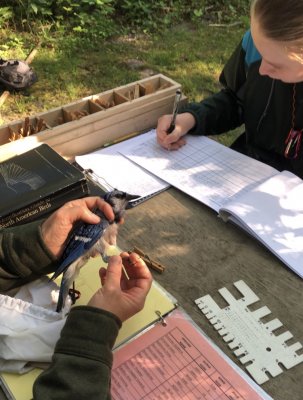
“Birds of Merry Lea”
Ruby Meyer, a junior biochemistry and chemistry double major from Huntington, Indiana, and Mira Yoder a sophomore biology and computer science double major from Harrisonburg, Virginia, are working with Carol Good-Elliot, environmental educator and ornithologist. They are studying the Merry Lea bird populations, an ongoing project since 2002.
Meyer is assisting with the bird-banding part time, which is put into the Mapping Avian Productivity and Survivorship system, which tracks bird populations in North America. She is also walking around the property to identify birds by sight and sound.
Yoder is assisting with a point count survey of “bird species seen and heard at 34 specific points on Merry Lea’s property,” Good-Elliot said. They are attempting to replicate a 2004 Maple Scholar project to determine population changes due to Merry Lea’s changing environment.
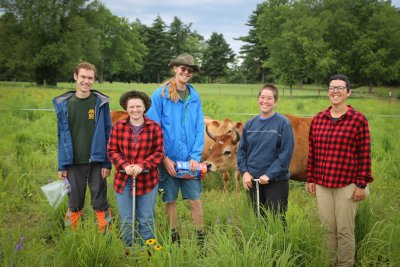
Prairie Grazing
Four students worked on the prairie grazing project. They are:
Skylar Antonides, a junior environmental and marine science major from Wauconda, Illinois; Madison Sorg, a junior environmental and marine science double major from Manchester, Indiana; Josie Strader, a senior environmental science major, music minor from Goshen, Indiana; and Janell Stoltzfus, a junior environmental science and ecology double major from Goshen, Indiana. Alex Graber Neufeld, a sophomore biology and Spanish double major from Harrisonburg, Virginia, is also helping with the project.
They are led by Ryan Sensenig, environmental science director, John Mischler, assistant professor of sustainability and environmental education and Jonathon Schramm, associate professor of sustainability and environmental education.
The team is studying the effects of fire and grazing, specifically by cattle, on plant composition within the prairies and soil organic matter and carbon content in the soil.




